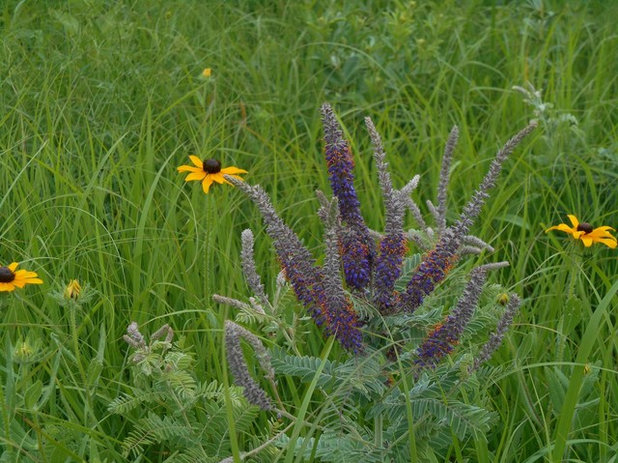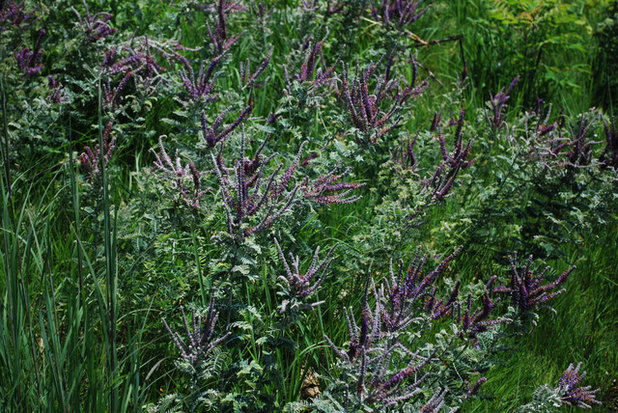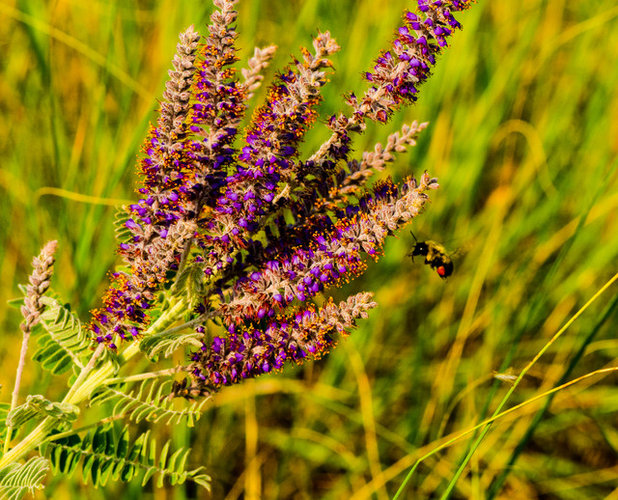This Great Plains native is said to be responsible for that zipping noise homesteaders heard when they plowed up prairies. But trust me, you don’t want to get rid of lead plant (
Amorpha canescens), as it deserves far more use in ornamental gardens. With attractive silvery, soft foliage and unique bloom spikes on a relatively compact, shrub-like form, lead plant will support diverse wildlife and require nearly no care for years on end.

Benjamin Vogt / Monarch Gardens
Botanical name: Amorpha canescensCommon names: Lead plant, prairie shoestring
Origin: Native from Michigan to Arkansas and west to New Mexico, Wyoming and North Dakota
Where it will grow: Hardy to -40 degrees Fahrenheit (USDA zones 3 to 9; find your zone)
Water requirement: Dry to medium soil
Light requirement: Full sun to a touch of shade
Mature size: 2 to 3 feet tall and up to 2 feet wide
Benefits and tolerances: Deep taproot
Seasonal interest: Blooms in early summer; unique silvery foliage; moderate winter interest
When to plant: Potted or bare-root plants can be planted from spring to fall; seed in fall or winter.
 Distinguishing traits.
Distinguishing traits. Lead plant could grow on your driveway. Well, no it couldn’t, but once established it is truly drought tolerant — it even likes rocky soils but busts through clay like no one’s business. The purple blooms give orange pollen to a myriad of pollinating insects, and the autumn seeds are valuable to birds and other wildlife. It’s a host plant for at least one sulphur butterfly species and several moth species, among lots of other insects that make great meals for birds feeding their young in their early-summer nests.
Photo by Joshua Mayer
 How to use it.
How to use it. Lead plant will pop nicely as a single specimen among shorter grasses, like prairie dropseed (
Sporobolus heterolepis) or sideoats grama (
Bouteloua curtipendula), but planting it en masse is how you might make this plant really stun from a distance. The foliage provides a nice contrast in the garden, due not only to the silvery color but also to the relatively small leaf size.
Planting notes. Lead plant prefers dry conditions. In soil from loam to clay to sand to gravel, it’s worth a try. If you grow lead plant from seed, it could take a few years to bloom, but once established it’s long lived — even becoming a small shrub that you don’t need to cut back annually, as you do herbaceous perennials.
Photo by Joshua MayerMore:Browse plants native to other regions of the U.S.
Gardening Solutions for Heavy Clay Soils





